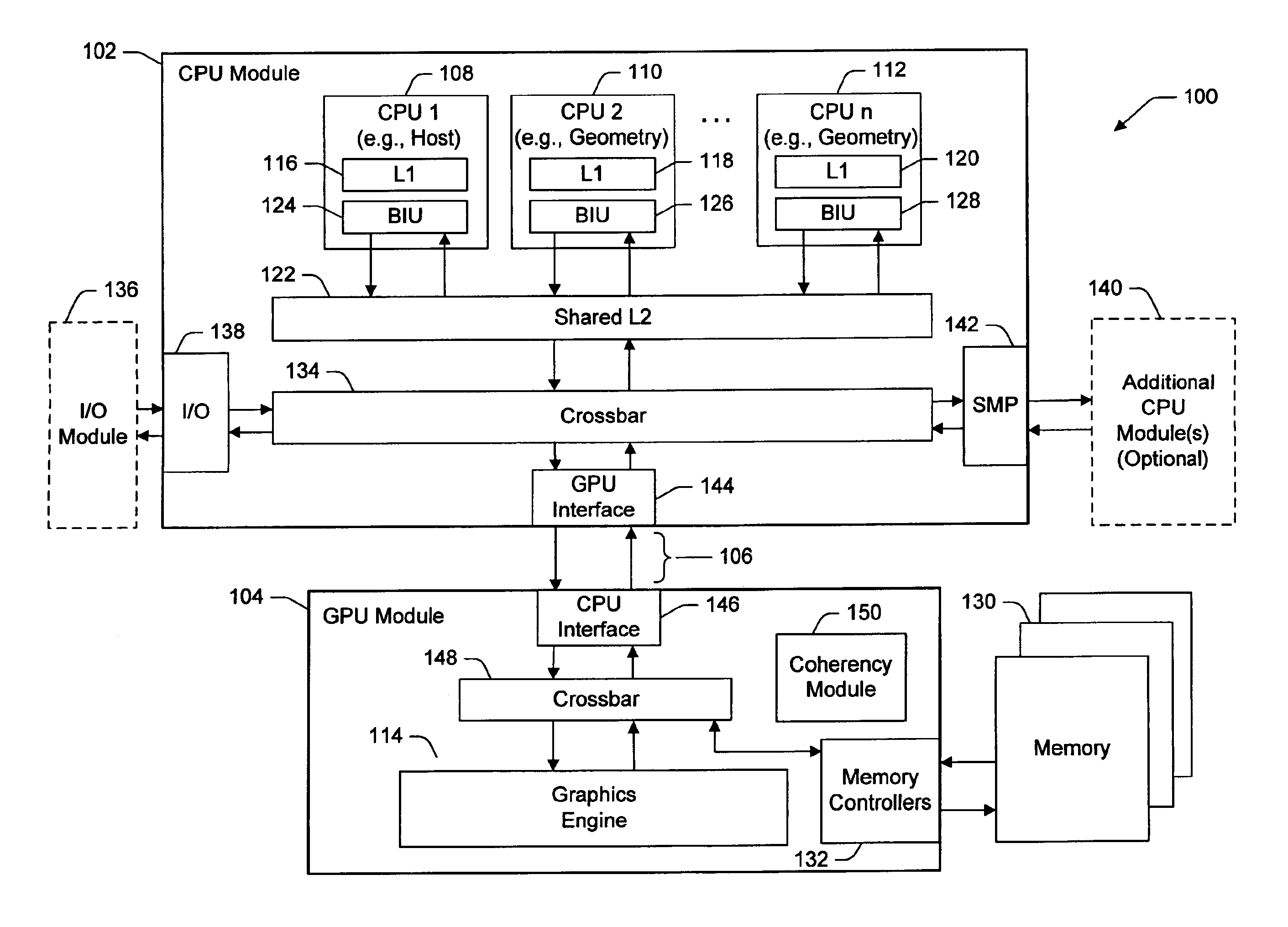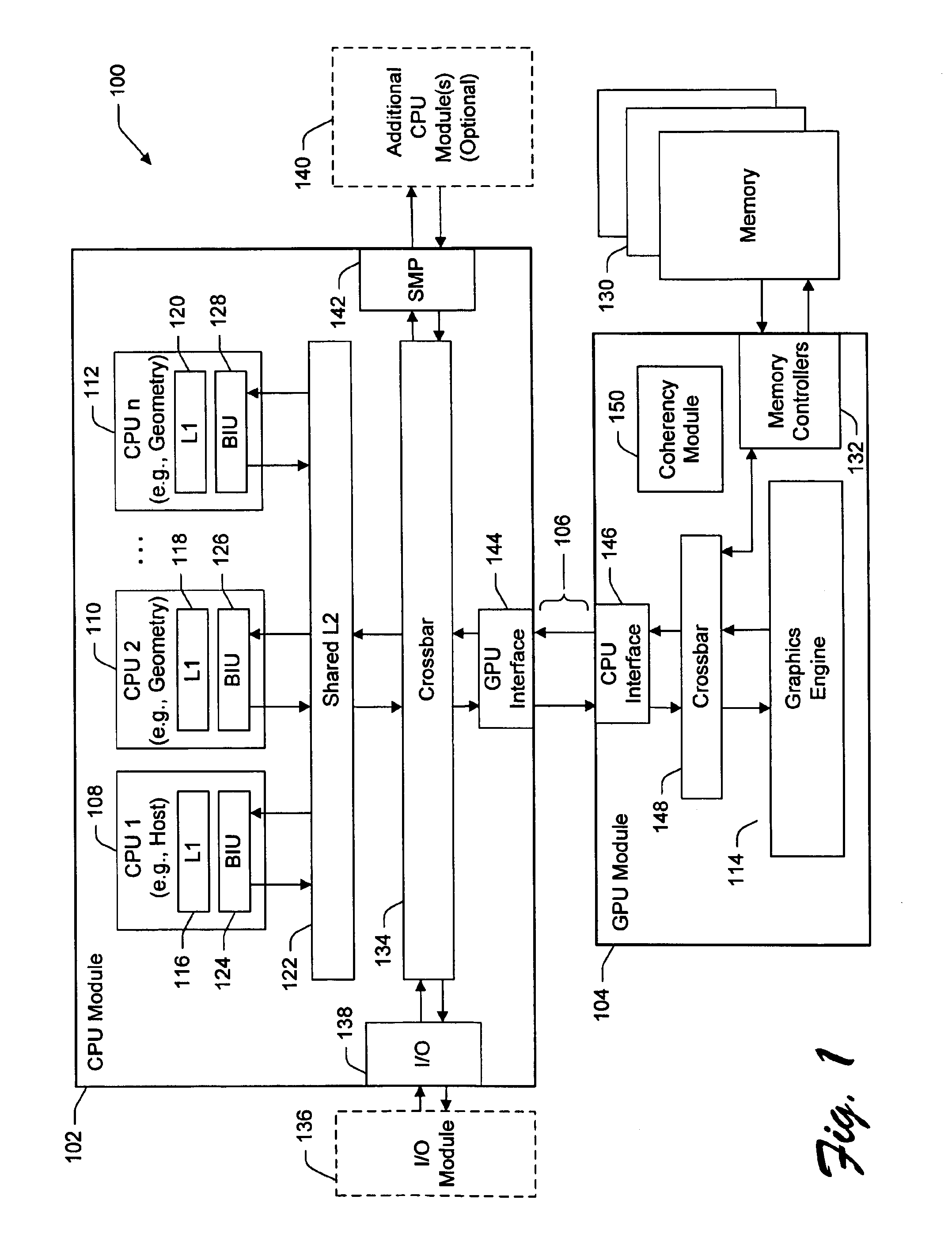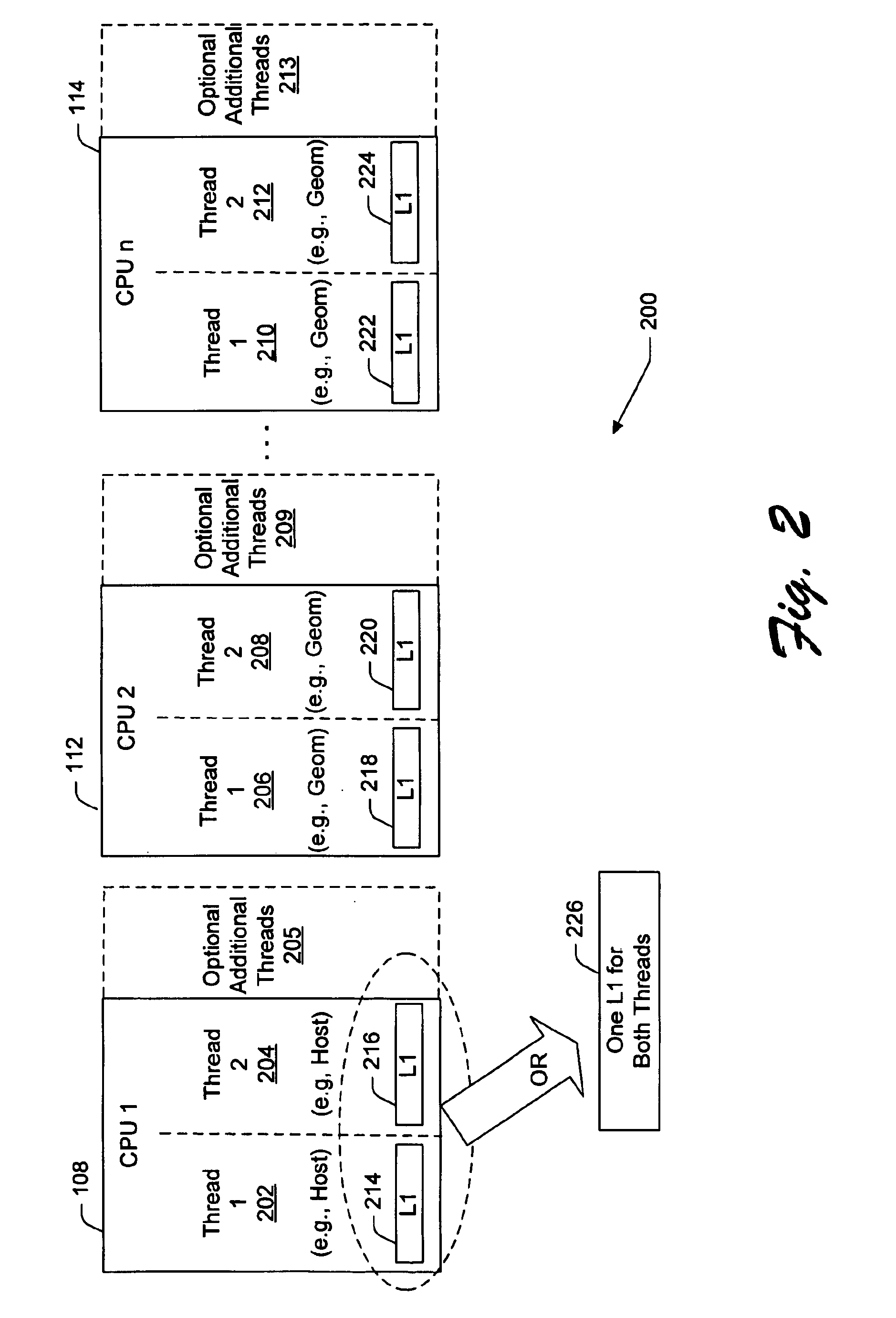System and method for parallel execution of data generation tasks
a data generation and task technology, applied in the field of system and method for parallel execution of data generation tasks, can solve the problems of increasing complexity, affecting the viability of game-playing platforms, and affecting the performance of game-playing platforms, so as to reduce the deleterious bandwidth restrictions, reduce the storage requirements of system memory, and reduce the undesirable interaction with system memory
- Summary
- Abstract
- Description
- Claims
- Application Information
AI Technical Summary
Benefits of technology
Problems solved by technology
Method used
Image
Examples
Embodiment Construction
This disclosure pertains to an architecture and related technique for parallel execution of data-generation tasks. Such data-generation tasks generally refer to an operation that entails receiving a first set of data and then generating a second set of data based on the first set of data, where the second set of data represents a greater amount of information than the first set of data. The ratio between the first set of data and the second set of data defines a decompression ratio. An application that provides a relatively high decompression ratio can effectively address some of the problems identified in the background discussion. For instance, an application that can generate a great amount of data from a relatively small set of input data eliminates (or reduces) the need to create this data beforehand, store such data in system memory, and then retrieve this data when it is time to process such data. Hence, such applications can avoid the deleterious latency and bandwidth proble...
PUM
 Login to View More
Login to View More Abstract
Description
Claims
Application Information
 Login to View More
Login to View More - R&D
- Intellectual Property
- Life Sciences
- Materials
- Tech Scout
- Unparalleled Data Quality
- Higher Quality Content
- 60% Fewer Hallucinations
Browse by: Latest US Patents, China's latest patents, Technical Efficacy Thesaurus, Application Domain, Technology Topic, Popular Technical Reports.
© 2025 PatSnap. All rights reserved.Legal|Privacy policy|Modern Slavery Act Transparency Statement|Sitemap|About US| Contact US: help@patsnap.com



